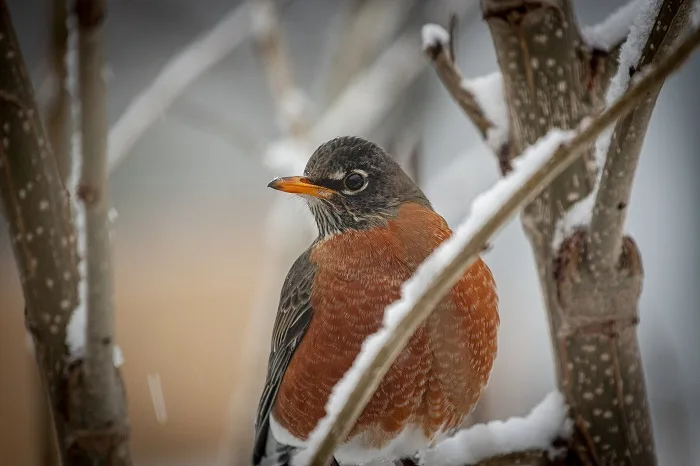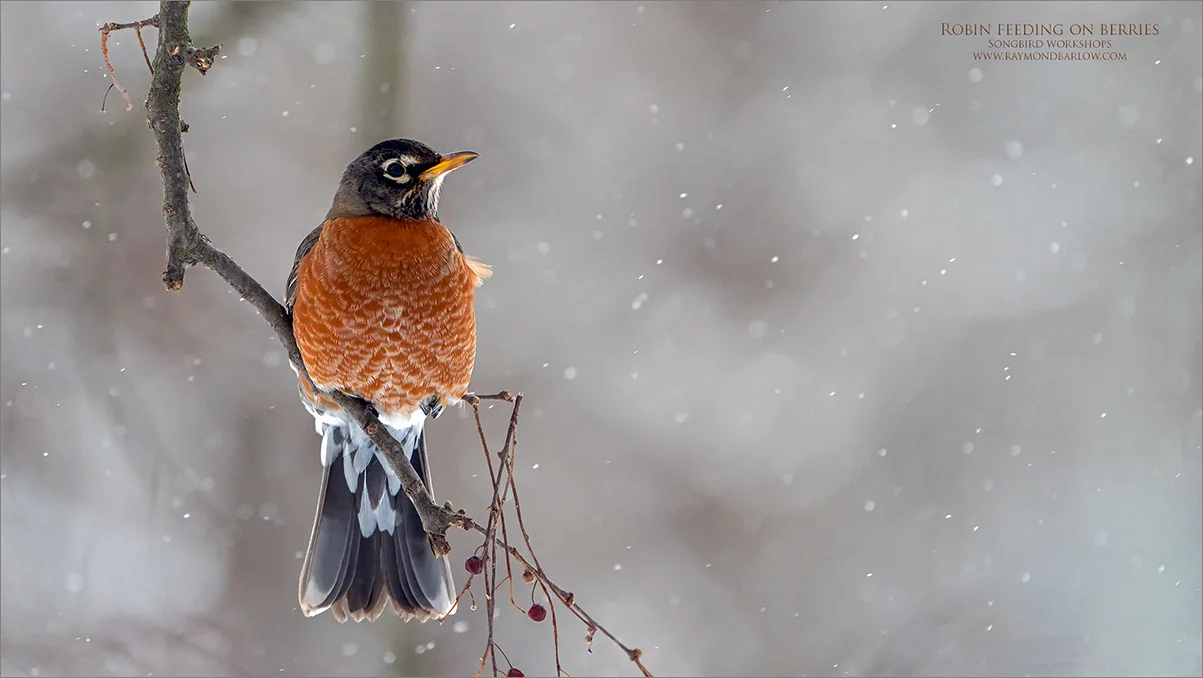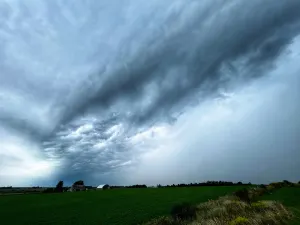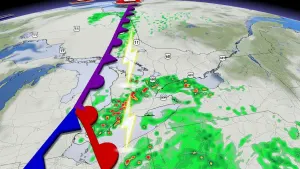
Why is there a robin in my yard in the middle of winter?
Winter is in full swing, and that means snow, ice, and ... robins?
In a Weather Network team huddle last month, Paul, one of our producers, posed a question.
"I just took a video of robins in my backyard," he said.
"I had to ask out loud, 'is it normal to see robins in the winter in these cold temperatures?'"
It may be strange to peer out your window and see a robin milling about, its bright red belly posing a stark contrast to the snow.
After all, these birds are often associated with spring. But as mild winters become increasingly common in parts of Canada, more and more of them are remaining in place.
WHERE CAN I SEE WINTER ROBINS?
You're most likely to spot a winter robin in southern B.C. and Ontario, as well as the coastal Maritimes, Jackson Kusack, a Ph.D. candidate in the Department of Biology at Western University, recently told The Weather Network.
"Where I grew up in Vancouver, winter robins are incredibly common, mostly because it doesn't get the same harsh winter. In places like the Prairies or northern Canada, you regularly wouldn't get any robins."
Still - Kerrie Wilcox of Birds Canada told us the number of wintering robins is going up nationally.
"Over the past few decades, more and more robins are adopting a non-migratory strategy, and they're migrating less than 100 kilometres."

There are some advantages to hanging around town for the winter. File photo (Charles8244/Pixabay).
Wilcox manages a program called Project FeederWatch, where people count the birds in their backyards and report the findings online.
Between November and April 2021, members documented robins at 59 per cent of Ontario sites.
"That's way up from 27 per cent in our first season in 1989. Winter robins are also on an upward trend in all regions of Canada."

An increasing number of robins are hanging around throughout the winter. Photo submitted to The Weather Network by Tiffany.
RELATED: 5 backyard birds you can find in Canada
WINTER SURVIVAL
When the temperature dips, robins - like other birds - employ several strategies to combat the cold. Their fat and feathers act as insulation, and they know to seek shelter from harsh storms.
In the spring and summer, you'll often see robins pecking at the ground in search of insects to eat. But bugs aren't available when the land is frozen and snow-covered, forcing them to change up their diet.
Wilcox said fruit makes up about 90 per cent of a robin's food in the winter. If you'd like to see them make an appearance on your property, you can increase the odds by adding native fruiting trees to your yard.
FOLLOWING THE FOOD
Whether a robin hangs around town or migrates to a warmer climate in winter typically boils down to one thing: food.
"The reason most robins migrate is that with the harsh winter conditions, it's difficult to find food, and it's more advantageous to go somewhere warmer," Kusack said.
But there may be a good reason to stick close to home.
"It allows the benefit of being the first one here when you come to breed. Migration in robins is a little complicated," Kusack said.
It changes from year to year, depending on the conditions.
"A lot of them undergo a sort of nomadic behaviour. In the winter, they'll group up in large flocks and follow the food. If it's a really bad year, then maybe more would migrate. If it's good year more might stay. It's really complex."

Feathers and fat help keep robins warm. Photo submitted to The Weather Network by Raymond Barlow.
DON'T MISS: 10 of Canada's most iconic animals
HELPING WINTER ROBINS
So - you spot a robin in your neighbourhood, and you'd like to help it out.
What should you do?
We've already mentioned curating your yard with native fruiting trees, which also provides benefits in the spring and summer, because it encourages insects to stop by.
You may also want to consider decorating your space with hedges and shrubs to provide shelter on stormy winter days and adding a regularly-maintained water resource.
"Water is difficult to find when everything is frozen," Wilcox said.
Other things you can do include bird-proofing your windows and keeping your cats indoors - strategies that can be put into practice year-round.
WATCH: FIVE WAYS TO PREVENT BIRD WINDOW COLLISIONS
Those seemingly small efforts can go a long way: in Canada, window collisions kill between 16 and 42 million birds annually, according to the Government of Canada.
And a 2013 study found cats to be the leading cause of bird fatalities in Canada, estimating they are responsible for 105 to 348 million avian deaths each year.
"The most important time to keep your cats indoors is during migration when you have many, many species coming through," Kusack said.
"Ideally, you do it at all times. But a lot of experts say that that's the most important time."
As for the window collisions?
"Robins, and many other songbirds, cannot perceive these 'invisible' surfaces, like windows. If that's an issue for your property, putting up little stickers on the outside of your window can help prevent collisions."
Video produced by April Walker. With reporting by Lia Nardone.










